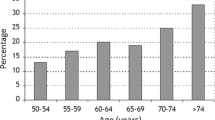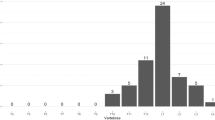Abstract:
Epidemiologic studies have shown a high prevalence of vertebral deformities in men without a steep increase with aging, suggesting that a substantial number of these deformities are not related to osteoporosis. To determine which vertebral deformities are likely to be osteoporotic fractures, we compared vertebral deformities and bone mineral density (BMD) in a cohort of 786 men aged 51–85 years (the MINOS study). Normal vertebral height ratios were defined in a group of 120 healthy men aged 21–50 years. We classified vertebral deformities by using the semiquantitative method described by Genant et al., which was slightly modified at the level of thoracic kyphosis (T6–T9). At that level, grade 1 wedge deformities were defined as a 25–30% decrease in anterior vertebral height and grade 2 by a 30–40% decrease. The same cutoff of 40% was used for grade 3 for all vertebrae from T4 to L4. BMD was measured with a Hologic 1500 device at the lumbar spine, hip and whole body and with an Osteometer DTX 100 device at the forearm. Z-scores were calculated in 10-year age groups. The prevalence of vertebral deformities increased significantly with age. After adjustment for age and body weight, BMD did not differ between those with and without vertebral deformities. In patients having grade 2 and 3 deformities, BMD was lower than in men having no deformities or only grade 1 deformities when adjusted for age and body weight. Using the age- and body-weight-adjusted test of linear trend for sextiles of BMD, prevalence of grade 2 and 3 vertebral deformities increased with a decrease in BMD at all the sites of measurement. Grade 1 deformities were not correlated with BMD at any site. Among 126 patients who had only grade 1 vertebral deformities, 32 deformities in 30 men were confirmed as vertebral fractures according to their morphology but their BMD did not differ from the nonfractured men. These findings were confirmed when vertebral deformities were measured by the conventional morphometric method in a subgroup of 131 men. Our data suggest that a cutoff of 30% for wedge deformities from T6 to T9 and of 25% for other deformities has a high specificity and a moderate sensitivity for identifying vertebral deformities related to low BMD in men. Grade 1 deformities are often either false positive or deformities related to nonosteoporotic disease of the spine.
Similar content being viewed by others
Author information
Authors and Affiliations
Additional information
Received: 25 April 2000 / Accepted: 27 October 2000
Rights and permissions
About this article
Cite this article
Szulc, P., Munoz, F., Marchand, F. et al. Semiquantitative Evaluation of Prevalent Vertebral Deformities in Men and their Relationship with Osteoporosis: The MINOS Study . Osteoporos Int 12, 302–310 (2001). https://doi.org/10.1007/s001980170120
Published:
Issue Date:
DOI: https://doi.org/10.1007/s001980170120




